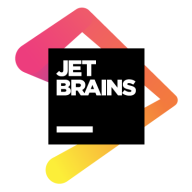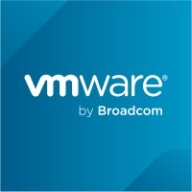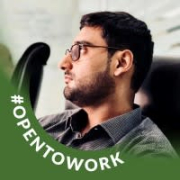

TeamCity and VMware Tanzu compete in the CI/CD and cloud-native management space. TeamCity, known for its user-friendliness and flexibility, seems to have the upper hand in ease of use, while VMware Tanzu stands out for its integration within the VMware ecosystem.
Features: TeamCity is praised for its build templates, customizable plugins, and excellent cross-platform support, making it a flexible and user-friendly tool. Meanwhile, VMware Tanzu offers outstanding integration capabilities with VMware products, excelling in Kubernetes cluster management. Its observability platform and service portal are valuable features noted by users.
Room for Improvement: TeamCity users suggest enhancements in reporting, UI navigation, and configuration ease. They also see potential in better integration with other platforms and simplified deployment steps. VMware Tanzu, on the other hand, could enhance its support for non-VMware ecosystems, improve third-party integrations, and refine its container networking features.
Ease of Deployment and Customer Service: TeamCity supports Private Cloud, Public Cloud, and On-premises environments, garnering mixed reviews for customer service but benefiting from strong documentation and community support. In contrast, VMware Tanzu is versatile across Hybrid, Public Cloud, and On-premises environments, receiving positive customer service ratings, particularly in technical support.
Pricing and ROI: TeamCity offers a free version with limited features, allowing cost-effective scalability but viewed as expensive by some. VMware Tanzu is considered costly, especially for smaller enterprises, yet competitive for larger businesses due to its bundled pricing strategy. The integration with VMware's suite adds value but raises costs.
| Product | Market Share (%) |
|---|---|
| TeamCity | 6.8% |
| VMware Tanzu Platform | 1.5% |
| Other | 91.7% |


| Company Size | Count |
|---|---|
| Small Business | 11 |
| Midsize Enterprise | 4 |
| Large Enterprise | 15 |
| Company Size | Count |
|---|---|
| Small Business | 10 |
| Midsize Enterprise | 3 |
| Large Enterprise | 10 |
TeamCity is a Continuous Integration and Deployment server that provides out-of-the-box continuous unit testing, code quality analysis, and early reporting on build problems. A simple installation process lets you deploy TeamCity and start improving your release management practices in a matter of minutes. TeamCity supports Java, .NET and Ruby development and integrates perfectly with major IDEs, version control systems, and issue tracking systems.
VMware Tanzu Platform is designed for cloud-native development and management of Kubernetes, CI/CD processes, microservices, and containerized workloads. It supports deployments both on cloud and on-premises, providing centralized management via Mission Control.
VMware Tanzu Platform offers seamless integration with vSphere, ESX, and vSAN, supporting centralized cluster management and lifecycle management. The platform provides a GUI for monitoring CI/CD pipelines and network policies, enhancing multi-tenancy and Day 2 operations. Users can easily manage Kubernetes clusters, monitor applications, and integrate with tools such as GitHub, GitLab, Cloud Foundry, and Azure. It ensures compliance and security for service providers, financial institutions, and businesses.
What are the key features of VMware Tanzu Platform?
What benefits and ROI should users look for in VMware Tanzu Platform reviews?
Industries such as financial institutions, service providers, and businesses requiring rigorous compliance and security deploy VMware Tanzu Platform. These entities benefit from centralized management, streamlined DevOps processes, and integrated tools, enhancing their capabilities in cloud-native developments and containerized workloads.
We monitor all Build Automation reviews to prevent fraudulent reviews and keep review quality high. We do not post reviews by company employees or direct competitors. We validate each review for authenticity via cross-reference with LinkedIn, and personal follow-up with the reviewer when necessary.